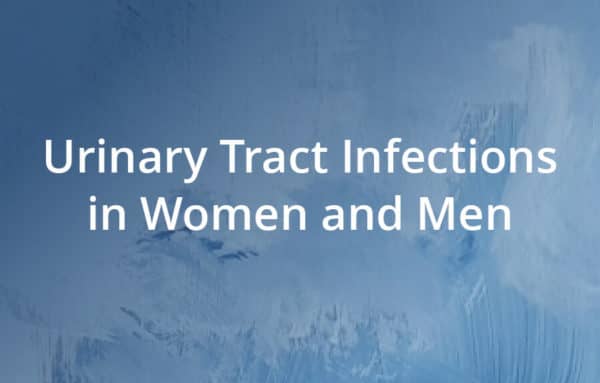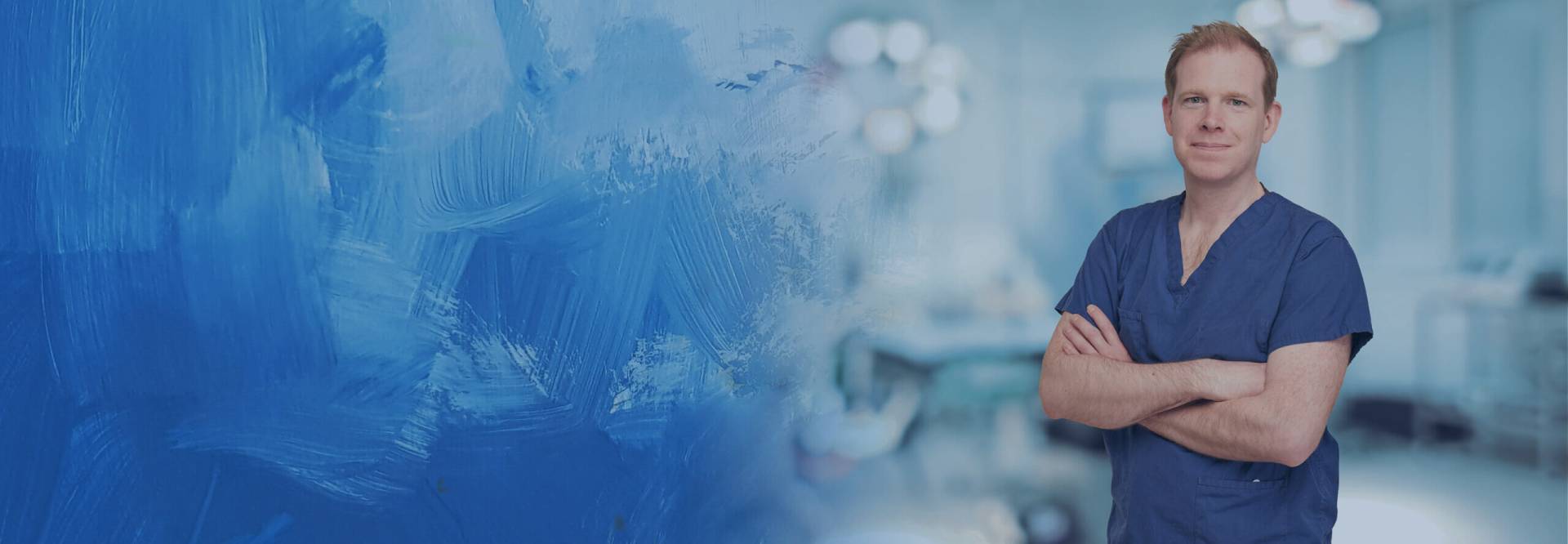
You have two kidneys located at the back of the upper abdomen. They essentially filter the blood, but they also play a vital role in keeping the body in a steady state. Urologists treat structural abnormalities of the kidney. Kidney cysts are extremely common amongst the general population and perhaps up to a third of people over 50 develop them and most do not need any treatment or routine follow-up. Kidney cancer is the 7th most common cancer, with an average of 13,000 new cases a year, in the UK. 34% of these are in people aged 75 or over. Its incidence has been increasing. Risk factors include smoking, obesity, high blood pressure and a family history. Most kidney cancers are found incidentally on scans investigating other conditions but can present with loin pain and blood in the urine. The most common treatment for kidney cancer is surgical removal (nephrectomy). Other examples of benign conditions I treat include the investigation of loin pain, hydronephrosis (build-up of urine within the kidney) and pelvic ureteric junction (PUJ) obstruction.

The prostate gland is only present in men. It surrounds the urethra (the tube that carries the urine from the bladder). Its main function is to help make semen and it grows as you get older leading to lower urinary tract symptoms.
Prostate cancer is the most common cancer in men. It accounts for 27% of all new cancer diagnoses in men in the UK. Survival rates for prostate cancer are excellent. A PSA blood test is performed to indicate if there might be an abnormality in the prostate. However, it can be raised in several conditions, including infections of the urine or within the prostate, in urinary retention or simply due to an enlarged prostate. To diagnose prostate cancer a digital rectal examination, MRI scan and a transperineal biopsy of the prostate are usually required. The treatment of prostate cancer is complex, and it is directed depending on the grade and stage of prostate cancer, but also individual factors need to be considered. For more information on risks, symptoms, prostate cancer tests, diagnosis and treatments, I would recommend visiting prostatecanceruk.org.
I am also able to offer the Stockholm3 prostate blood test. For information on the Stockholm3 blood test please visit camclinlabs.co.uk/stockholm3

There are two types of blood in the urine. Non-visible blood, which is found on the urine dipstick test commonly performed at the GP surgery, and visible blood, which is blood that you can see in the urine. It can be alarming. Non-visible blood is present in around 2.5% of the population without any concern. Several benign conditions can cause it. It is normal to investigate non-visible blood with an ultrasound scan of the kidneys and bladder, and with direct inspection of the bladder (flexible cystoscopy). However, not all non-visible blood needs to be investigated urgently or on a two week wait cancer pathway. However, visible blood, especially in those over the age of 45, should be investigated via a two week wait cancer pathway. The investigation of visible blood requires a CT scan and a flexible cystoscopy.
I am also able to offer a novel urine test called the Galeas Bladder cancer test. This looks at DNA in the urine and it can help direct investigations in patients presenting with non-visible blood in their urine and in those who have already been diagnosed with bladder cancer. Please visit galeas.net/galeas-bladder
BUPA is the first insurance company to offer this to their policy holders bupa.com/news/press-releases/2023/bladder-cancer-test-insurance

Urinary symptoms are common in both men and women. In men they tend to develop with age as the prostate gland enlarges with age. Common symptoms include frequency, urgency, nocturia (waking up at night to pass urine), hesitancy, weak stream, straining the abdomen to void, and an intermittent stream. Urinary symptoms are called ‘LUTS’ (lower urinary tract symptoms). These are investigated by taking a thorough medical history. Men also require a digital rectal examination of the prostate to assess for the size and any significant abnormality. A flow rate test (passing urine into a special toilet) and measuring the volume of urine left in the bladder is performed to assess the urinary flow. You may also need to complete a bladder diary (recording the type and volume of fluids you drink and documenting every time you pass urine).
Treatments for urinary symptoms range from lifestyle changes, (eg drinking less tea and coffee), to medication, through to surgical options. I would recommend looking at the British Association of Urologists information on urinary symptoms in men baus.org.uk/patients/conditions/9/prostate_symptoms_bladder_outlet_obstruction.

Urinary tract infections (UTIs) are very common, especially in women. Most UTIs are treated by the GP. You may need to see a urologist if the urine infection is becoming problematic. For example, if you are getting recurrent or a persistent UTIs. Other causes of UTIs include kidney stones, poorly emptying bladders, and structural kidney conditions. UTIs usually present with cystitis symptoms which include, pain in the lower abdomen, pain on passing urine, frequency and urgency, and smelly urine. Sometimes you may see blood in your urine.
Some infections can cause a kidney infection, which is called pyelonephritis. This can be much more serious, and you may develop a temperature with rigors (shaking), pain in the kidney region, vomiting, and cystitis symptoms. To confirm a urine infection a dipstick urine test is performed and the urine should be sent to the laboratory for a culture to see which type of bacteria is causing the infection. E. coli is the most common cause of a UTI.
I would recommend visiting the British Association of Urologists information page on UTIs: baus.org.uk/patients/conditions/14/urinary_infection_adult.

Most lumps on the testicle are benign. Cysts arising from a structure called the epididymis are common. These can feel like lumps on the testicle. Fluid around the testicle is also common, particularly in older men. This is called a hydrocele. To investigate testicular lumps and swellings an ultrasound scan is required. This is extremely sensitive at diagnosing testicular lumps. Not all lumps and swellings need treatment.
Sometimes a urinary infection or a sexually transmitted infection can cause testicular swelling and pain. This is called epididymo-orchitis.
Testicular cancer is the commonest cancer in men aged between 20 and 50 years. It is rare in men over the age of 50. Risk factors for testicular cancer are a history of an undescended testicle and a family history of testicular cancer. The treatments for testicular cancer are extremely effective and around 95% of men survive.
For more information on testicular lumps and how to self-examine, please see baus.org.uk/patients/conditions/12/testicular_lump.

Foreskin problems are extremely common. These can affect any age. A tight foreskin can cause problems on erection or during sexual intercourse. A tight foreskin can be ‘physiological’ (ie it is not associated with any abnormality of the skin), or it can arise from a skin condition or an infection. Penile cancer is very rare. A circumcision is required for an extremely problematic foreskin or those with a chronic inflammatory condition that has not improved with steroid creams.

Around 9% of the population will develop a kidney stone within their lifetime and they can affect people of all ages. Most people are asymptomatic unless the stone moves out of the kidney into the ureter (the pipe that connects your kidney to your bladder). This is called ureteric colic and is known to be one of the worst pains imaginable. The pain typically ‘comes and goes’. The pain starts in the loin and radiates to the groin, and you can have nausea and vomiting. It is diagnosed with a CT scan and in some cases may require an operation to remove the stone. However, the majority of small stones (5mm or less) will pass in the urine on their own.
Small stones in the kidney are unlikely to cause any symptoms, although some may experience a dull ache in the loin, infections or have blood in their urine.
There are many different treatment options for stones, depending on their size and location. Common treatments include shockwave lithotripsy or surgical removal called a ureteroscopy and laser fragmentation.
For dietary advice on reducing the risk of kidney stones please read the information leaflet download on the button below:



